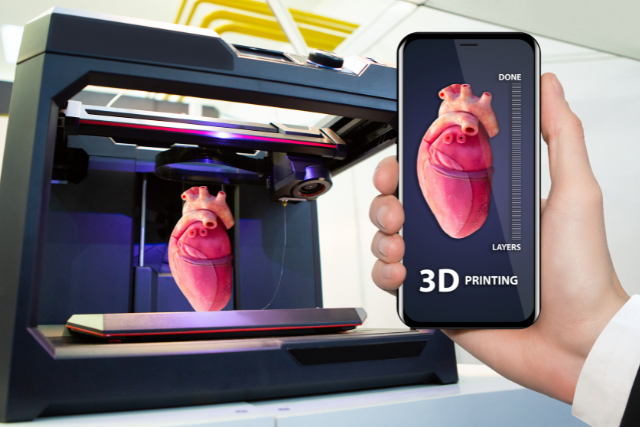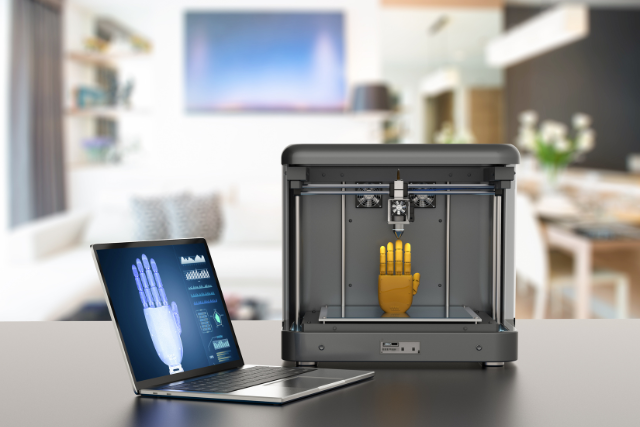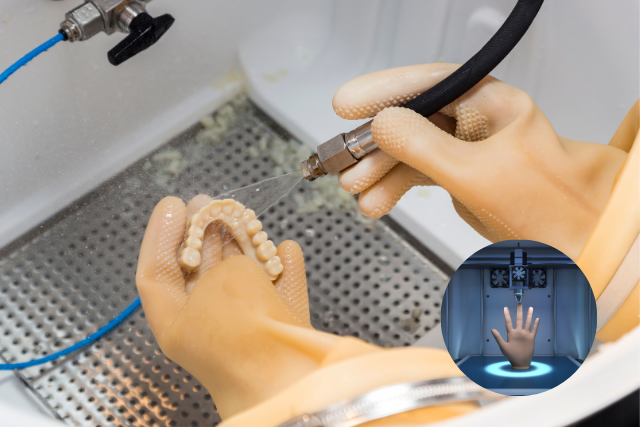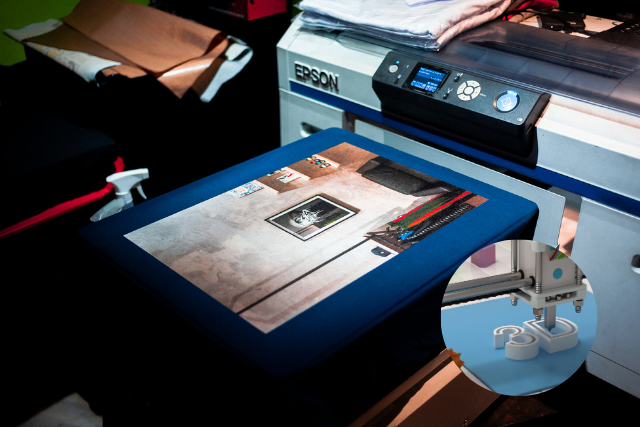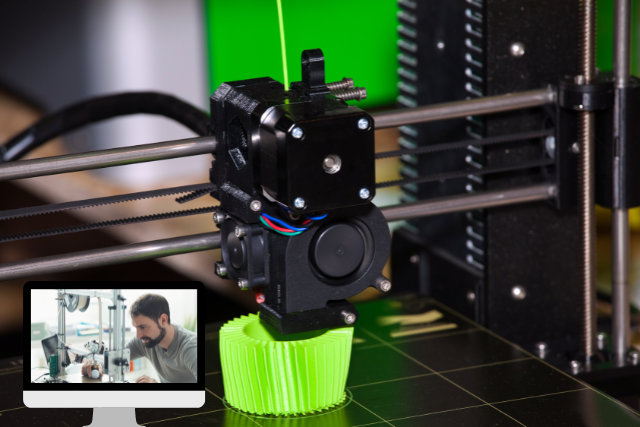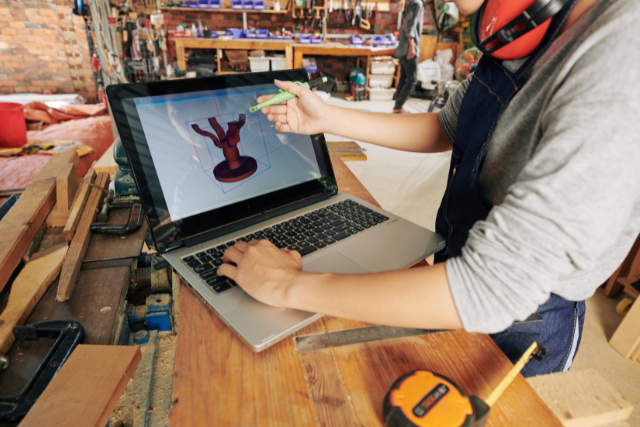As we gently step into the future of medicine, you’ll find that 3D printing is not just about creating objects anymore; it’s revolutionizing healthcare in ways we’ve only begun to understand. The possibilities are vast, from expanding custom prosthetics that fit like a glove to advancements in bio-printing that could one-day print whole organs.
You’re also looking at a world where surgical risks are reduced, and access to healthcare isn’t dictated by geography. Yet, with these advancements come emerging regulatory challenges that beg the question: How do we navigate this new frontier? Stick around, and let’s explore what lies ahead together.
Key Takeaways
- Custom prosthetics and bio-printing will continue to tailor healthcare, making treatments more personalized and effective.
- 3D printing will further reduce surgical risks and enhance the efficiency of pre-surgical planning, leading to safer procedures.
- The technology democratizes global healthcare access, making life-saving treatments more affordable in developing countries.
- Adaptive regulation is crucial to balance innovation with safety, ensuring the responsible evolution of 3D printing in healthcare.
Expanding Custom Prosthetics
3D printing is revolutionizing how we create custom prosthetics, making them more accessible and tailored to individual needs. Imagine a world where you’re not just getting a one-size-fits-all solution for a missing limb but a prosthetic that fits your body perfectly.
This is not just about comfort; it’s about giving you back your freedom and mobility in ways that were unimaginable a few decades ago.
You see, traditional prosthetic manufacturing is expensive and time-consuming, limiting options for many. But now, 3D printing is breaking down those barriers.
It’s slashing costs and production times, making these life-changing devices available to a broader audience. You’re no longer bound by what’s available; you can have a say in the design of your prosthetic, ensuring it matches your lifestyle and preferences.
This shift isn’t just technical; it’s deeply personal. It’s about empowering you to live without constraints and embracing technology to make your world more navigable. The future of healthcare is here, and it’s putting the power back in your hands, enabling you to step boldly into a world that sees no limits to what you can achieve with a prosthetic that’s as unique as you are.
Advancements in Bio-Printing
Stepping into the world of bio-printing, we’re witnessing a groundbreaking shift in how we approach regenerative medicine and tissue replacement. You’re now part of a world where the creation of living tissues isn’t just a possibility—it’s happening.
This leap forward means you can look forward to more natural, effective healing options, reducing the need for synthetic implants and offering new hope for those in need.
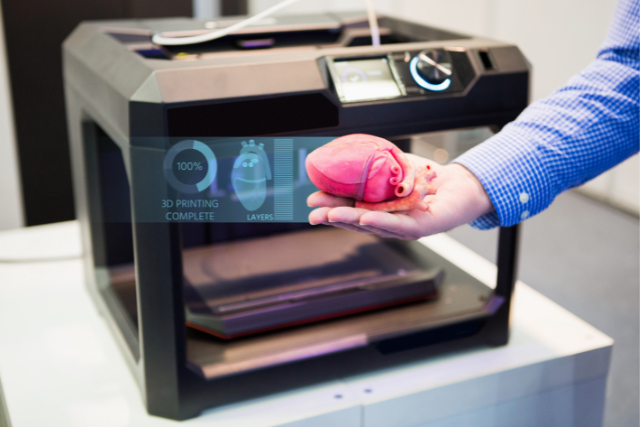
Imagine having tissues or organs printed specifically for your body, minimizing rejection risks and enhancing recovery. Here’s a glimpse into what’s currently unfolding:
| Technology | Impact |
|---|---|
| Organ Printing | Custom-made organs, reducing transplant waiting lists. |
| Skin Printing | Rapid healing for burn victims, transforming recovery. |
| Vascular Tissue | Improved blood supply, ensuring implanted tissues thrive. |
| Complex Tissues | Incorporating muscles and nerves for more functional replacements. |
This isn’t just science fiction; it’s the liberation of healthcare, offering personalized solutions that could revolutionize how we treat injuries and diseases.
You’re at the forefront of a change that’s reshaping lives, making the future of medicine not just more advanced but fundamentally more humane and tailored to individual needs.
Reducing Surgical Risks
As we explore the marvels of bio-printing, it’s equally important to consider how these advancements can significantly lower the risks associated with traditional surgeries.
Imagine going into surgery knowing that the tools and implants being used are tailor-made for your body. That’s not a distant dream; it’s quickly becoming a reality with 3D printing in healthcare.
You’ve probably heard how surgeries can sometimes lead to complications. These risks often stem from using “one-size-fits-all” tools and parts. But with 3D-printed medical devices and implants, doctors can perform surgeries with unprecedented precision. This means less time under the knife and a quicker recovery for you.
Imagine a world where your surgery is planned with the help of a 3D-printed model of your organ. Surgeons can practice these models before the actual procedure, reducing the likelihood of surprises during the operation. It’s like having a rehearsal for a play, ensuring everything goes smoothly on the opening night.
This isn’t just about making surgeries safer; it’s about making them more efficient and personalized. And as you stand on the brink of this new era, there’s a whole world of possibilities where your health is concerned, all thanks to the power of 3D printing.
Enhanced Surgical Tools Production
The production of surgical tools is transforming, thanks to 3D printing technology, offering surgeons tools tailored to their technique and patient needs.
Here’s why this is a game-changer:
- Customization at its Best: Every patient is unique, and now, the tools used in their surgery can be too. Custom-made tools fit patient anatomy perfectly, reducing surgery time and improving recovery.
- Rapid Prototyping: Surgeons can quickly have tools designed, printed, and tested, speeding up the innovation cycle and bringing advancements to the operating table faster.
- Cost Reduction: Traditional tool production can be expensive, especially for specialized equipment. 3D printing slashes these costs, making advanced surgical tools more accessible.
- Increased Accessibility: With the ability to produce tools on-demand, even remote or under-resourced hospitals can access the latest surgical innovations.
This leap forward in surgical tool production isn’t just about technology; it’s about freeing healthcare from the constraints of one-size-fits-all tools, empowering surgeons, and offering patients personalized care paths that were once deemed futuristic.
Breakthroughs in Skin Printing
Shifting our focus to another innovative application of 3D printing in healthcare, let’s explore the remarkable advancements in skin printing. Imagine the power to create skin, layer by layer, tailored to heal wounds or replace scarred tissue. That’s not science fiction anymore; it’s a reality unfolding right before our eyes.
You’ve probably heard about 3D printing’s impact on creating prosthetics or dental implants, but skin printing is a game-changer for burn victims and those undergoing reconstructive surgery.
The process involves using bio-inks, made from a patient’s cells, to print skin that’s biologically compatible with their body. This reduces the risk of rejection and accelerates the healing process.
Researchers are pushing the envelope, developing techniques to print skin complete with hair follicles and sweat glands. This level of detail means the printed skin isn’t just a patch; it’s functional and integrates seamlessly with the body’s natural processes.
For you, this means a future where scars and burns can be treated with hope for recovery and the certainty of restoration. It’s a liberating thought – the idea that technology can offer such personalized and effective healing solutions.
3D Printed Pharmaceuticals Development
3D-printed pharmaceuticals are revolutionizing how medications are developed, customized, and dispensed. You’re stepping into a future where your medicine is tailored for you, not just in dosage but in shape, size, and even release rates.
This isn’t science fiction; it’s the cutting-edge reality that’s making waves in healthcare.
Here’s what you need to know:
- Personalized Medication: You can now have medications designed to meet your unique needs, potentially reducing side effects and improving efficacy.
- On-demand Production: Hospitals can produce drugs on-site, slashing wait times and making treatment more accessible.
- Innovative Drug Forms: Imagine taking a single pill that releases medication at different times or combining multiple medications into one. That’s within reach.
- Sustainability: This technology promises to reduce waste by streamlining drug production and distribution processes.
You’re witnessing a transformative period in healthcare, where technology like 3D printing gives you more control over your treatment options.
It’s not just about what’s being treated but how it’s being treated, bringing a personalized touch to medicine that was unimaginable a few years ago.
Democratizing Global Healthcare
One of the most transformative impacts of 3D printing in healthcare is its ability to make quality medical care accessible to people worldwide, regardless of their location or economic status. This breakthrough is not just about innovation; it’s about liberation.

It’s about breaking down the barriers that have traditionally kept life-saving treatments and technologies out of reach for millions.
Here’s how 3D printing is paving the way for a more inclusive healthcare landscape:
- Cost Reduction: Traditional medical equipment and prosthetics can be prohibitively expensive. 3D printing slashes these costs, making essential healthcare tools and devices affordable for underserved communities and developing countries.
- Customization: Everyone’s body is unique, and 3D printing accommodates this diversity by enabling personalized medical solutions. From tailor-made prosthetics to patient-specific surgical models, healthcare can now be as individual as you are.
- Rapid Response: In crises where time is of the essence, 3D printing offers a swift solution. It allows for on-the-spot medical supplies and parts production, sidestepping logistical delays and ensuring that help arrives when needed.
Emerging Regulatory Challenges
While 3D printing brings unparalleled benefits to healthcare, it also introduces a complex landscape of regulatory challenges that must be navigated.
You’re stepping into a world where innovation clashes with traditional regulatory frameworks, and it’s a wild ride.
Just think of creating custom prosthetics or organs with a 3D printer. Sounds like sci-fi, right? But here’s the catch: how do we ensure they’re safe and effective for everyone?
Governments and regulatory bodies are scrambling to catch up. They’re tasked with protecting public health while fostering innovation, a balancing act that’s easier said than done.
New materials, processes, and products are popping up faster than regulations can be updated. It’s like trying to write rules for a game that’s still being invented.
What’s needed is a dynamic approach to regulation, one that supports rapid innovation while ensuring products are safe. It’s a call to action for regulatory bodies to evolve, to think outside the box.
For you, it means being part of a healthcare revolution, pushing boundaries while advocating for responsible innovation. The road ahead is uncertain but exciting, and you’re right at the heart of it, championing a future where healthcare is more personalized, accessible, and cutting-edge than ever before.
Conclusion
As you’ve seen, 3D printing is revolutionizing healthcare, from tailor-made prosthetics to pioneering bio-printing organs. It’s cutting down surgical risks and making healthcare more accessible worldwide.
Yet, this innovation isn’t without its hurdles, especially regarding regulation. As we navigate these challenges, the potential for 3D printing in healthcare is boundless.
It’s an exciting time, and you’re at the forefront of witnessing how technology can truly better our lives. Stay tuned; the best is yet to come.

